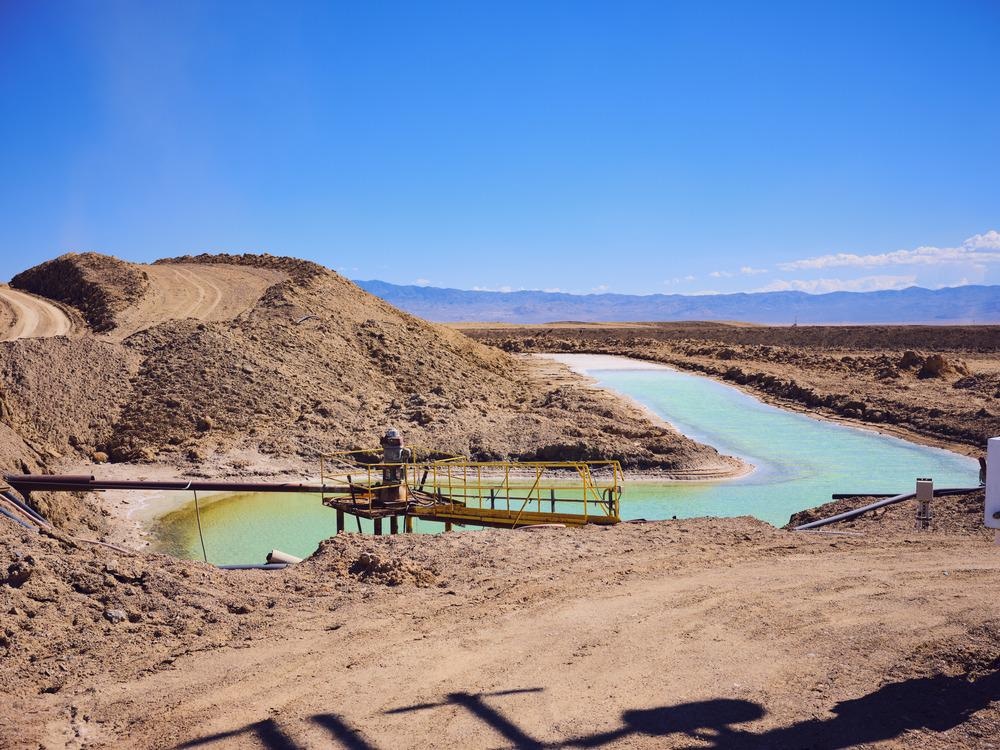A paper published online in the journal Separation and Purification Technology has demonstrated a way to overcome a critical issue in the extraction of lithium brine, promising significant advances for the lithium-ion battery industry.

Brine pool for lithium mining.Study: Refinement of brine for lithium extraction using ion concentration polarization. Image Credit: Cavan-Images/Shutterstock.com
Lithium: Powering New Technologies
Lithium is an element that has huge commercial potential. As the industry moves away from the use of non-renewable resources for power generation and fuel, the need for reliable batteries is paramount. One of the main industries that are making use of lithium-ion batteries is the electric vehicle industry. Batteries are being used to replace internal combustion engines, which have issues with finite resources and harmful emissions.
However, lithium is still a finite resource that requires intensive processing, which causes damage to ecosystems, which is at odds with the sustainability of battery storage. Heavy equipment and intensive labor are also required in mineral extraction. Toxic runoff from mining operations and emissions from industrial equipment compound the issues facing the industry.
Brine Extraction
One method of extraction that is favorable due to processing costs and abundance of resources compared to mineral sources is brine extraction. Brine extraction is not without its drawbacks, though. There is an ever-present issue with contamination from other ions, especially magnesium. Most of the brine found in Bolivia, Chile, and Argentina has too high a concentration of magnesium to make it commercially viable. Separation of the ions in the brine mixture is challenging.
Furthermore, solar baths, which are commonly used for lithium concentration, face issues with land disturbance and processing time. It can take a couple of years to purify the brine, which makes it a costly and inefficient method. To solve these problems, new methods of brine extraction are necessary.
Electromembrane Methods
In recent years, there has been much focus of research into electromembrane methods. These have proven to be more environmentally friendly than techniques that are reliant on chemical reagents, which can be costly to produce and difficult to dispose of due to their corrosive nature. Anion exchange membranes, monovalent CEMS, and selective electrodialysis have all been explored.
However, drawbacks were identified in the extraction process due to low lithium recovery rates causing high degrees of energy consumption along with the system’s microfluidic size. The team has said that economic scaling circumvents these issues, as once parameters are normalized, the technique is of a similar order of magnitude compared to other extraction techniques currently employed.
Here's Where the Juice That Powers Batteries Comes From
Video Credit: Bloomberg Quicktake/Shutterstock.com
However, these methods also face challenges that reduce their commercial viability. They suffer from the formation of crystalline deposits on the membranes, and issues with separation performance and power consumption.
Refining the Process of Lithium Brine Extraction
The study published online has presented a novel method for lithium brine extraction that provides a solution to the key challenges faced by the industry. The method provides an alternative to solar evaporation, significantly reducing cost and time considerations.
The technique uses a polarization-induced local electrical field to separate the ions and concentrate the lithium content of the brine. Ions are separated due to electrophoretic mobility into different streams by the method. The technique is both continuous and scalable, giving it a huge potential for widespread use in the lithium extraction industry.
The team behind the research announced that they had used the method to reduce magnesium concentrations in the mineral brine to acceptable purity standards. A 25:1 magnesium/lithium-ion mixture was reduced to less than a 10:1 ratio. They also demonstrated the capacity to reduce a 60:1 brine mixture to a 10:1 concentration and even a 100:1 mixture to a 20:1 concentration, significantly improving the rate of brine extraction in a fraction of the time it would take with solar baths.
Despite the drawbacks of this novel technique, it shows exceptional promise to improve the exploitation of brine to produce commercially viable lithium for battery applications in multiple industries.
The Future
Providing efficient, reliable, environmentally friendly, and sustainable technologies is a current focus of global research. The battery industry will see an increasing uptake of new clean power solutions by industries including power generation and automobiles. Better lithium-ion brine extraction methods will take maximum advantage of this critical resource, removing the need for intensive mining operations that damage fragile ecosystems further.
The research featured in the paper demonstrates a cutting-edge extraction method that will help the exploitation of lithium resources to become more efficient, cleaner, and cost-effective. Future extraction methods will likely be informed by the study, paving the way for a better, greener future for humankind and the planet.
Further Reading
Barksdale, C et al. (2021) Refinement of brine for lithium extraction using ion concentration polarization [online] Separation and Purification Technology Vol. 282 Part B, 120055 | sciencedirect.com. Available at: https://www.sciencedirect.com/science/article/pii/S1383586621017603
Disclaimer: The views expressed here are those of the author expressed in their private capacity and do not necessarily represent the views of AZoM.com Limited T/A AZoNetwork the owner and operator of this website. This disclaimer forms part of the Terms and conditions of use of this website.